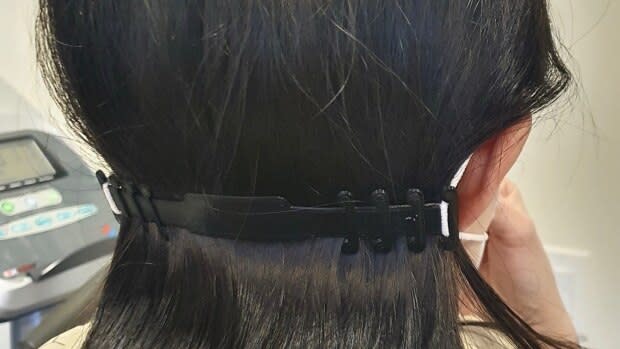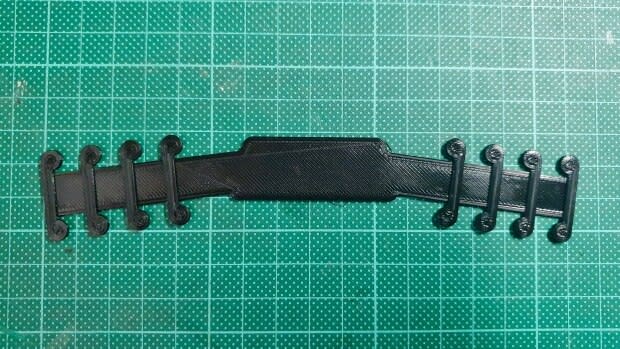Burnaby teen 3D printing 'ear savers' for hospital staff
Aaron Lu, 16, still doesn't have any Grade 11 classes this week, so he's been filling his time by running his 3D printer around the clock to produce little plastic parts to help health care workers taking part in the COVID-19 response.
Lu got the idea from a 3D printing community online, and soon got his hands on open-source plans for a face shield part and another part known as an 'ear saver.'
The budding mechanical engineer, who works on and flies race drones as a hobby, printed a part and posted it online — both on a Facebook group dedicated to Vancouver COVID-19 support and on his Instagram account.
"I got a massive response asking for face masks and essentially ear relievers for masks that registered nurses wear," said Lu on Tuesday.

There are standards for personal protective equipment (PPE) manufacturers, and the face shield part would have to pass certain hurdles. The ear savers, however are more of an add-on that just makes it easier on the health care worker, so that's where Lu has focused his efforts.
He said the bleach used to sanitize the PLA plastic that his 3D printer uses would break down the plastic, so the ear saver is a safer item to produce.
And the demand for the ear savers has been significant.
Lu said a nurse friend of his got in touch on Instagram, and has been getting the parts to colleagues at Burnaby Hospital — a bit of a back channel.
"I actually started about two days ago and I have about 40 printed out," he said.

Lu can make four at a time, and each batch takes about two hours, with a break afterward to prepare the surface for the next set.
The ear saver is about 16 cm across, and each end has four vertical teeth to hook the mask straps around — depending on the size of the healthcare worker's head.
Online, health care workers have been finding creative ways to relieve the pressure on their ears.
Lu expects that large manufacturers with the ability to produce parts like this with injection molding will soon be able to supply millions of the parts, but in the meantime, he and others with 3D printers are stepping in to fill the gap.
"It costs very little in plastic and not much electricity, so I hope you guys can all fire up your printers and help toward this cause," Lu said to fellow 3D printer owners.
Do you have more to add to this story? Email rafferty.baker@cbc.ca
Follow Rafferty Baker on Twitter: @raffertybaker


